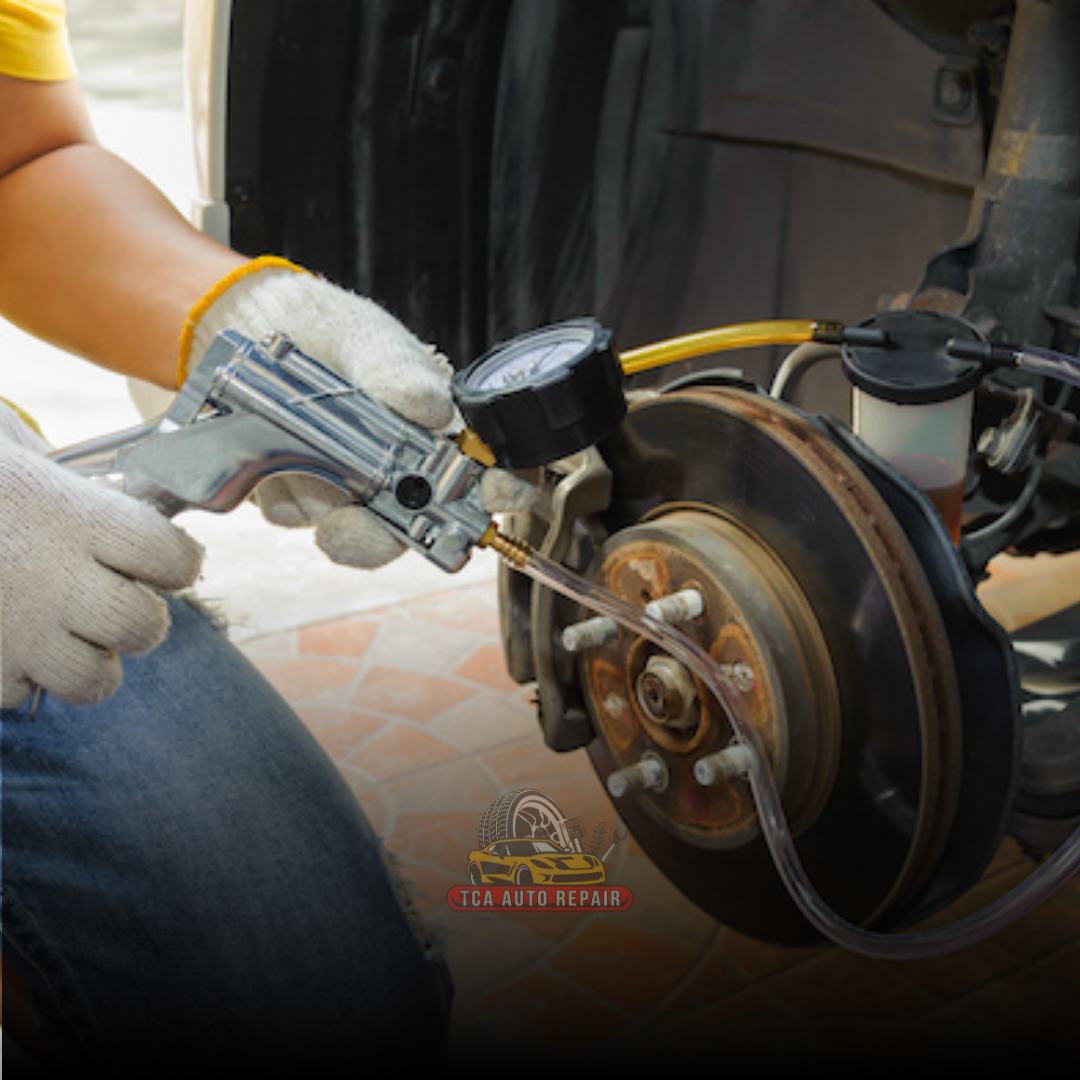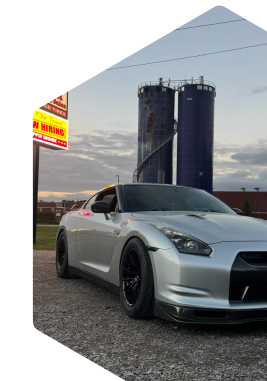- Hours Of Operation:Mon-Friday 8am - 6pm
- Towing Service: Open 24/7

When you press the brake pedal, you expect your vehicle to slow down or stop instantly. But this action depends on more than just the brakes themselves. The brake fluid behind your brake pedal amplifies the stress on the pedal from your foot and enables you to stop a large, fast-moving vehicle easily. To maintain this performance, your brake fluid must be serviced regularly. Most people know that regular car maintenance includes verifying the brake pads. Squeaky brake pads draw attention, and the car will take longer to stop than normally needed. However, proper vehicle maintenance involves caring for your brake fluid to ensure safety on the road.
Moisture and high-temperature working of brake fluid can degrade its performance, causing potential safety hazards. Understanding how to maintain brake fluid and check its levels is fundamental for every car owner. This blog will investigate brake fluid, its role in vehicle safety, and how regular maintenance can prevent costly repairs and accidents.
Many car owners know about essential fluids like oil and coolant, but brake fluid often remains a mystery. Unlike other car fluids that lubricate or cool down parts, brake fluid transfers force into pressure. It converts the action of your foot pressing on the brake pedal into a force that can stop the wheels from turning. Think of it like a messenger that carries your intention to break from the pedal to the brakes themselves.
It flows through brake lines, allowing for efficient stopping. When you press the brake pedal, the fluid is pushed through the lines, creating hydraulic pressure that squeezes the brake pads against the rotors. This action generates the friction needed to slow down or halt your vehicle. Since braking generates a lot of heat, brake fluid is designed to handle high temperatures without boiling or evaporating quickly.
There are different types of brake fluid, including DOT 3, DOT 4, and DOT 5, each with unique properties suited for various vehicles. DOT 3 and DOT 4 are glycol-based and commonly used, while DOT 5 is silicone-based and found in specialized cars.
Note: Fresh brake fluid is typically clear or light amber. However, due to moisture, dirt, or contaminants, it can become dark or murky over time, indicating the need for a change.
Ignoring brake fluid is a mistake that can lead to serious problems. Here are some risks that come with neglecting regular brake fluid maintenance:
Brake fluid is hygroscopic; it absorbs moisture from the environment. This lowers its boiling point, causing it to vaporize quickly under high temperatures. As a result, the fluid becomes less efficient in transmitting force, reducing brake responsiveness.
When moisture enters the brake fluid, it can corrode and damage vital parts of the braking system. This includes the brake lines, calipers, and master cylinders. Corroded components increase the risk of leaks and reduce the overall braking performance.
Contaminated or old brake fluid can lead to brake fade, a condition in which the brakes lose their ability to function efficiently under stress. This extends the vehicle’s stopping distance and puts drivers in dangerous situations, especially emergencies.
Just like oil or coolant, brake fluid needs to be checked and changed over time. Spotting issues with brake fluid early can prevent more significant problems.
Knowing what color is brake fluid is important. If your fluid appears dark brown or murky instead of clear or light yellow, it’s likely contaminated. Cloudy or gritty fluid indicates that debris and moisture have entered the system, reducing efficiency.
A “soft” brake pedal that sinks too quickly to the floor is a warning sign. This could mean air or moisture has entered the system, affecting the fluid’s pressure and causing a delayed braking response.
Most modern vehicles are equipped with a brake warning light. If this light appears on your dashboard, it might be a sign of low brake fluid or another issue with your braking system. Check your fluid level and consult a mechanic immediately.
Squealing, grinding, or clunking sounds when you brake could be a symptom of fluid issues. Contaminated fluid can cause parts to wear out faster, leading to noises that indicate trouble.
Keeping your brake fluid in good condition isn’t just a recommendation—it’s necessary for safe driving.
Regular brake fluid changes ensure your braking system responds when you need it. Clean fluid allows for effective pressure transfer, ensuring you brake quickly in an emergency.
Clean brake fluid prevents rust and wear on critical braking parts. Contaminated fluid can damage brake lines and calipers, leading to costly brake repairs. Maintaining the fluid reduces the wear on these parts and prolongs their lifespan.
The longer you wait to change your brake fluid, the more likely you’ll face issues that require expensive repairs. A small investment in routine brake fluid maintenance can save you from much larger repair bills down the road.
Learning to check and maintain brake fluid can significantly affect your car’s performance and safety. Here are some steps to keep your brake fluid in top shape:
Open the hood and locate the brake fluid reservoir. It’s usually found near the back of the engine bay. Ensure the fluid level is between the “MIN” and “MAX” marks. Top it up immediately if it’s below the “MIN” level.
Observe the fluid’s color. Remember that fresh brake fluid is clear or light yellow. If you notice any darkening or contamination, it’s time for a change.
Brake fluid should be changed every 2 years or around every 30,000 miles, but this varies by vehicle. Consult your car’s owner’s manual for the manufacturer’s recommended schedule. If you’re unsure how long brake fluid lasts, ask a certified auto repair shop for guidance.
Changing brake fluid can sometimes be complex, requiring proper tools and knowledge. Taking your car to an auto repair shop for professional brake services ensures the job is done safely and correctly.
Proper brake fluid maintenance is a small yet crucial aspect of car care. Regular checks and timely replacements ensure that your braking system works efficiently, providing reliable stopping power when needed. You can maintain your vehicle’s safety and performance by knowing how to check brake fluid, recognize its color, and understand how long it lasts.
Regular visits to an auto repair shop for brake services or performing DIY checks can prevent potential dangers on the road. Keeping up with brake fluid maintenance doesn’t just protect your vehicle – it safeguards your life and the lives of others around you.
Make it a habit to keep your brake fluid in optimal condition, and you’ll experience safer and more confident driving every time you hit the road.
Event Highlights:
Bring your best car and your A-game!
